Many people are now well aware of the many benefits of using fiber cement for your siding and exterior cladding needs. Many of those same people, however, may assume that the material only comes in traditional horizontal lap siding or board and batten siding. And while these are two very attractive types of fiber cement, you can also find decorative cement board in a range of other styles as well.
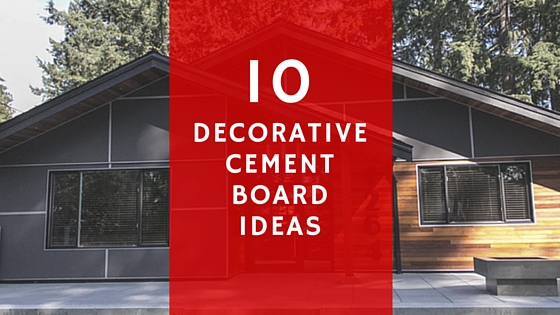
Decorative Cement Board Design Ideas
1. Many different types of traditional homes require a variety of siding and decorative coverings for the exterior. Decorative cement board can be used in every instance, including half round shingles, and raised panels, as well as more traditional lap siding in several different widths. With the ability to be painted in a variety of different colors as well, this makes cement board one of the most versatile materials for covering traditional homes.
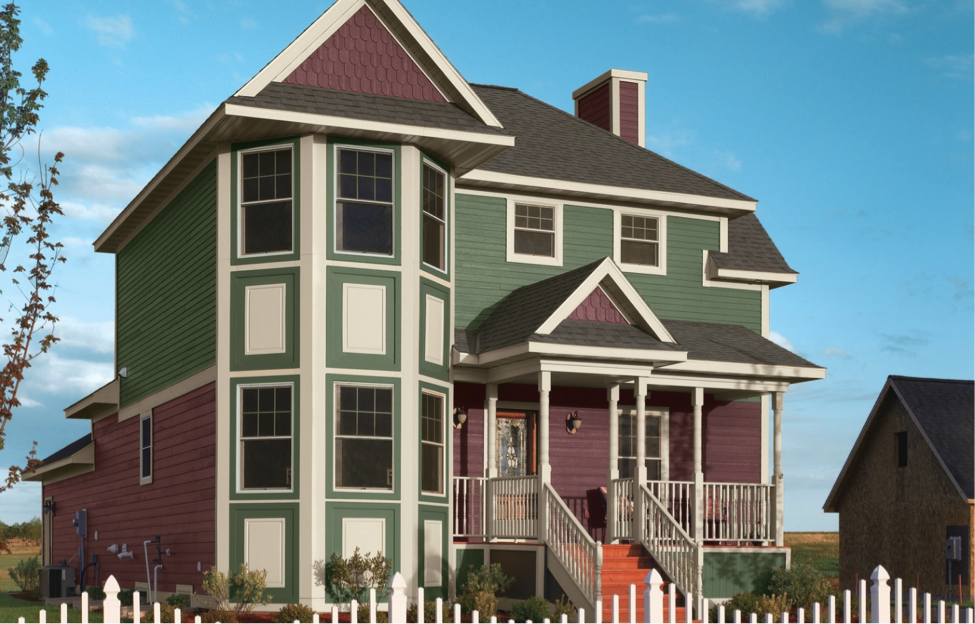
2. In addition to traditional looks, decorative cement board can also be used to create a variety of contemporary and industrial styles as well. In this case, fiber cement panels with the appearance of rivets are used with a long, board and batten style siding on the other side of the home. Paired with stone on the lower half, this complements the architecture of the house beautifully. The seams on all the panels match up with the trim around the soffits to complete the look.

3. The oversized panels on this house emphasize the clean lines of the architecture. Decorative cement board can be found in numerous sizes, including large format designs that, paired with contrasting trim, can bring out the contours of the home. The panels are offset in one section to follow the pitch of the roof, while straight set down the front of the home, both areas helping to show off the lines of the house. This is paired with traditional, wood-stained horizontal lap siding to provide contrast and detail to the home.

4. Large format panels don’t have to be used solely on contemporary-style homes. In this more traditional setting, the trim on the panels is color matched to create a conventional style. These long panels frame the windows to draw additional attention to the area, while the trim emphasizes the shape of the siding, without contrasting it. The windows are set above framed panels within the larger sections to create the illusion that they’re larger than they actually are. The rest of the home is covered in traditional horizontal lap siding to complete the look.

5. Decorative panels don’t have to be square to make an impact. In this case, the panels are set at geometric angles to emphasize the height of the building, drawing the eye upward through the center of the area. The windows are framed with panels in a variety of shapes and sizes on either side. The metallic trim frames and contrasts the shaped panels in the center to further emphasize their shape and draw the eye.

6. Sometimes decorative panels need to take on a natural appearance as well. In this case, the panels have a simulated wood grain that is created by using real wood within the mold with the panels as they are formed. In addition, they also have a simulated rivet in same color for additional texture and interest. The contrasting metal trim helps create an industrial look that pairs well with the brick on the rest of the building.
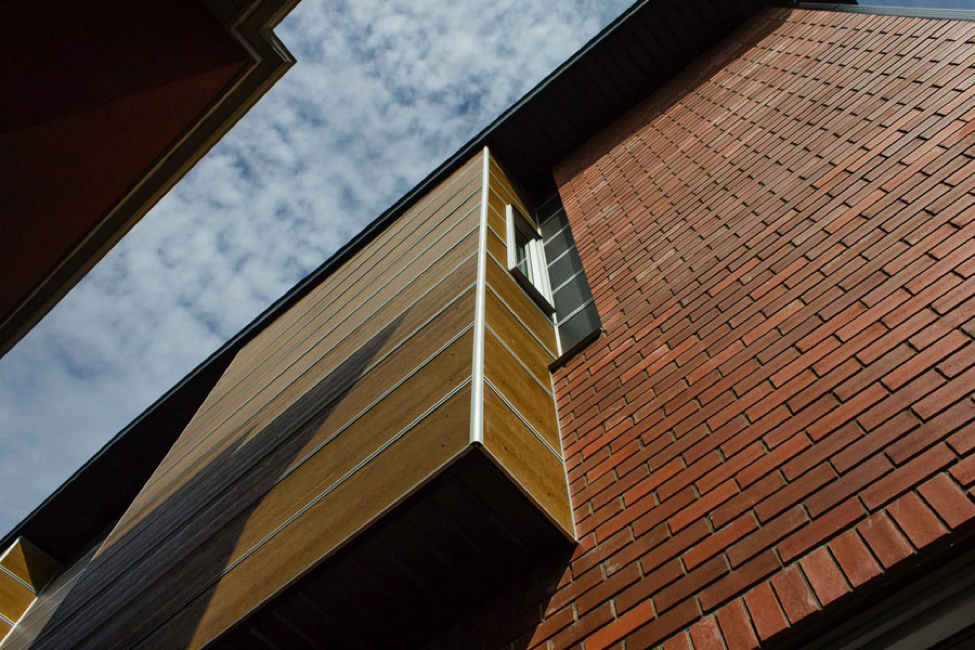
7. In addition to wood grain, decorative cement board can also take on a variety of other textures as well. In this case the texture of the boards creates the look of block concrete on the oversized panels. The metal trim helps to complete the contemporary style, while the more traditional horizontal lap siding on the other sections of the building creates a pleasing contrast in color and in texture.

8. Sometimes to be decorative, all you need is a little color. Fiber cement decorative panels can be painted in any shade. And because of the way that the paint is applied, it’s unlikely to peel, chip, or fade away, which makes it the ideal material for carrying off bold shades like this chartreuse. While the panels are flat in comparison to the other materials on the building, the color makes this section stand out.
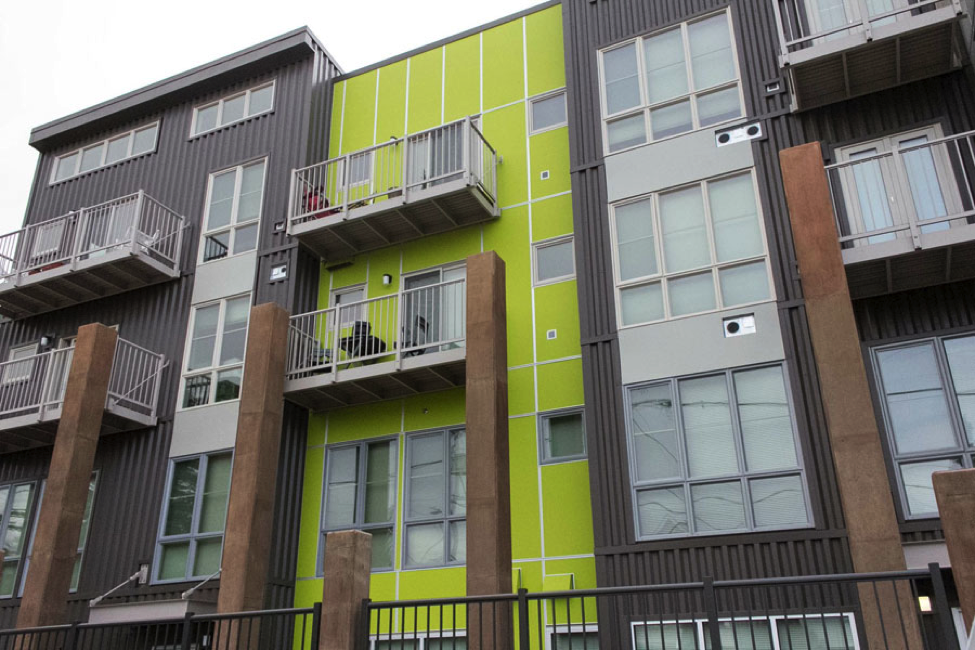
9. Contrast can be very eye-catching, decorative, and of interest to the viewer. In this case, dark, smooth cement board is used in contrasting panels against corrugated metal siding. This helps to break up the wall of the building, creating the illusion of windows and keeping the building from becoming too monotonous in design.
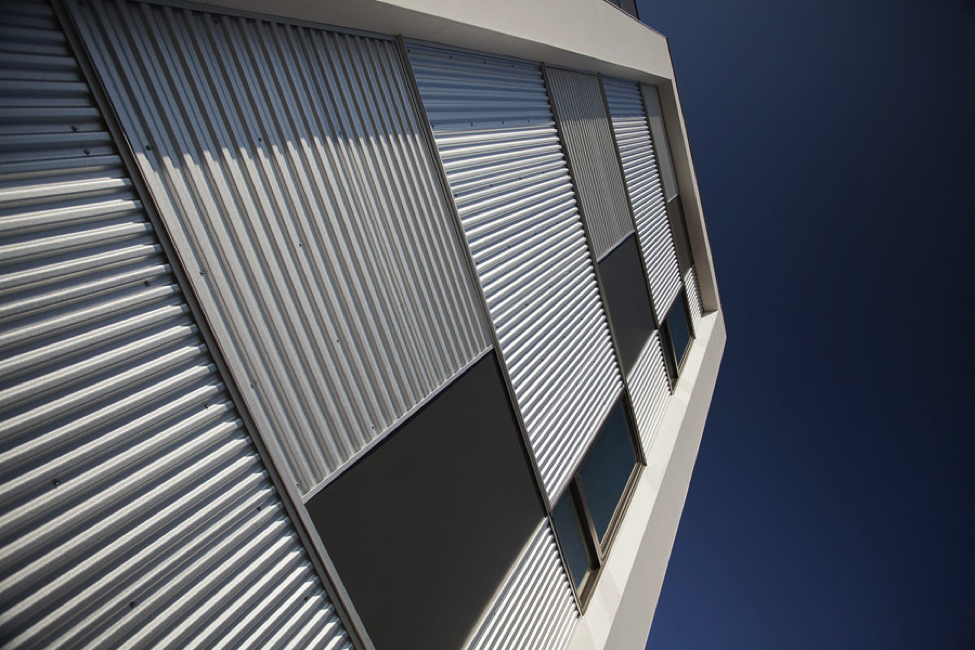
10. One of the best parts of decorative cement board is the many ways in which it can be installed. In this case, traditional-style shingles are used on the upper portion of the house. They’re also used as a decorative detail beneath the roof line, but turned to create a completely different look that draws and captures the eye. Paired with horizontal lap siding, this helps to capture the many details of the house’s architecture.

Decorative cement board can take on many different looks, styles, and designs, making it suitable for any home or building. If you’ve thought that fiber cement can only come in one style, you may want to give it a second look for your exterior needs.




